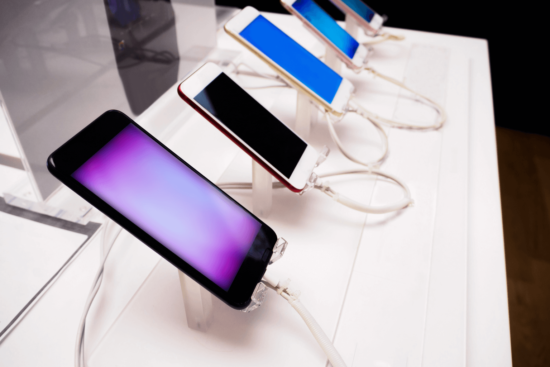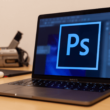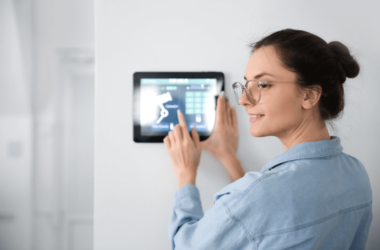Intro
In the ever-evolving world of technology, choosing the right smartphone can feel like an uphill battle. With new smartphone models being released each year, consumers are faced with the challenge of deciding which phone best suits their needs. From the sleek design of the iPhone 13 to the cutting-edge features of the Samsung Galaxy S21, each model offers unique advantages. But which one emerges victorious in this battle for superiority? In this blog post, we’ll delve into a comprehensive comparison of these leading smartphone models, helping you make an informed decision on your next purchase.
Understanding the Core Problems Smartphones Solve Today
Smartphones have become an integral part of our daily lives, evolving into versatile tools that extend far beyond traditional communication. These sophisticated devices address a multitude of modern-day challenges by serving as our primary means for connectivity, information access, and multimedia consumption. With features tailored to enhance productivity, smartphones facilitate efficient work-from-anywhere capabilities through comprehensive app ecosystems, supporting everything from email management and document editing to project tracking and virtual meetings.
In addition to productivity, entertainment and creative expression are at the fingertips of users, thanks to advanced photography, videography, and gaming capabilities. Smartphones enable users to capture professional-grade photos and videos, edit them with powerful onboard tools, and share them instantly with a global audience. Gaming on smartphones has also seen tremendous growth, with devices now offering console-quality experiences through high-performance processors and optimized graphics.
Moreover, the role of smartphones in health and wellness cannot be overstated. These devices act as personal health monitors, tracking physical activity, sleep patterns, and even nutritional intake, encouraging a healthier lifestyle. They also provide immediate access to medical information and facilitate telehealth services, making healthcare more accessible.
With these varied functionalities, smartphones cater to the ever-changing needs of users, offering solutions to enhance various aspects of life. The choice between models like the iPhone 13 and Samsung Galaxy S21, therefore, hinges on which device better aligns with the individual user’s demands for connectivity, productivity, entertainment, and health management. Each model’s unique features and capabilities aim to solve these core problems, albeit in slightly different ways, reflecting the diverse priorities and preferences of their user base.
iPhone 13 vs. Samsung Galaxy S21: Design and Build Quality
The iPhone 13 and the Samsung Galaxy S21, each exhibit the pinnacle of their respective brand’s dedication to aesthetic and structural excellence, marking a high point in the realm of smartphone design. The iPhone 13 upholds Apple’s iconic design philosophy, featuring a sophisticated, flat-edged look complemented by a Ceramic Shield front that’s reputedly more robust than any other smartphone glass, offering both style and substance. Its design is both familiar and fresh, with an eye towards durability and minimalist beauty.
In contrast, the Samsung Galaxy S21 takes a different approach to its design ethos, opting for a bold, modern aesthetic. It boasts a striking contour-cut camera housing that integrates smoothly with its metal frame, giving it a seamless and futuristic appearance. This design not only sets the Galaxy S21 apart visually but also emphasizes Samsung’s focus on blending form with function. The device’s robust build includes a metal frame that provides a solid, premium feel in the hand, along with a Gorilla Glass Victus back for enhanced durability against drops and scratches.
Both models offer IP68 water and dust resistance, ensuring that they can withstand the elements to a similar degree. This feature is essential for users who demand resilience from their devices in everyday scenarios, from accidental spills to unexpected rain.
While Apple’s iPhone 13 appeals to those who appreciate a timeless, elegant design, the Galaxy S21 targets users who favor a standout, contemporary look that pushes the boundaries of smartphone aesthetics. Each device reflects its brand’s vision and values through its design and build quality, illustrating the distinct paths Apple and Samsung have taken to achieve excellence in this fiercely competitive market.
Camera Capabilities: Which Phone Takes the Crown?
In the realm of smartphone photography, both the iPhone 13 and Samsung Galaxy S21 stand out, each brandishing their high-tech camera systems geared towards a variety of photographic scenarios. The iPhone 13 brings to the table a sophisticated dual-camera system with 12MP ultra-wide and wide lenses. Its hallmark feature, sensor-shift optical image stabilization, ensures sharp, stable images across various conditions, particularly shining in low-light scenarios. This stabilization also extends to video, with the iPhone’s cinematic mode allowing users to achieve film-like depth-of-field transitions, a boon for video content creators looking to add a touch of professionalism to their shots.
On the other side, the Samsung Galaxy S21 responds with a versatile triple-camera setup, showcasing a 64MP telephoto, 12MP wide, and 12MP ultra-wide lenses. This array not only caters to standard photo-taking needs but elevates the experience with its 8K video recording capability and a 30x Space Zoom feature, enabling users to capture detailed images from far-off distances. This makes the Galaxy S21 a powerful tool for photographers looking to capture a wide range of subjects, from expansive landscapes to minute details of distant objects.
While the iPhone 13’s cinematic mode is a standout for videographers aiming for depth and dynamism in their footage, the Galaxy S21’s telephoto lens and high-resolution zoom open up new possibilities for photographers aiming to explore the intricacies of their subjects from afar. Each phone caters to different aspects of the photographic experience, making the choice between them a matter of personal preference and intended use. Whether prioritizing video production with cinematic flair or the versatility in photography, both the iPhone 13 and Samsung Galaxy S21 offer compelling reasons for photographers and videographers alike to consider them as their next smartphone companion.
Performance and Battery Life: A Battle of Efficiency
Delving into the heart of what keeps these tech marvels ticking, both the iPhone 13 and Samsung Galaxy S21 showcase the zenith of current processing power and energy management. At the core of the iPhone 13 beats the A15 Bionic chip, lauded for its lightning-fast performance and efficiency. This powerhouse of a processor not only ensures smooth operation across the board but also contributes significantly to the iPhone 13’s commendable battery longevity. Users can expect a reliable day’s worth of usage from the iPhone 13, a testament to Apple’s focus on optimization and energy efficiency.
On the other side, the Samsung Galaxy S21 is equipped with either the Exynos 2100 or the Snapdragon 888, depending on the region. These chips are no slouches, offering robust performance that rivals the iPhone’s, ensuring that everything from everyday tasks to demanding gaming sessions run without a hitch. However, when it comes to battery life, the Galaxy S21 demonstrates proficiency, though it slightly trails behind the iPhone 13 in terms of outright longevity. Yet, Samsung gains ground with its quicker charging capabilities, appealing to users who value minimal downtime. The inclusion of faster wired and wireless charging options means the Galaxy S21 can be quickly powered up and ready to go, making it a strong contender for those who lead a fast-paced lifestyle.
Both smartphones illustrate the industry’s strides toward striking the perfect balance between potent performance and enduring battery life. Whether one values the sustained usage offered by the iPhone 13 or the rapid rechargeability of the Galaxy S21, each device stands as a testament to the technological advancements in the realm of smartphone efficiency.
Ecosystem and Software Experience: The Tiebreaker
The divergence between choosing an iPhone 13 and a Samsung Galaxy S21 often pivots on the contrasting ecosystems and software experiences they offer. The iPhone 13 operates on iOS, Apple’s proprietary operating system, renowned for its intuitive interface and seamless interoperability with a wide array of Apple devices, from iPads to MacBooks. This interconnectedness is a boon for users deeply entrenched in the Apple universe, enabling a smooth, unified experience across devices. iOS also places a strong emphasis on user privacy and security, with regular updates that fortify these aspects.
Conversely, the Galaxy S21 thrives on Android’s open ecosystem, which is celebrated for its flexibility and the degree of customization it allows. Users can tailor their devices to their liking, from the home screen layout to the default apps for various tasks. Android’s integration with Google services is unmatched, providing a cohesive and efficient environment for those reliant on Google’s ecosystem, including Gmail, Google Drive, and Google Photos. The choice between iOS and Android may also influence app availability and selection, as certain apps and features might be exclusive to one platform or operate differently on each.
In essence, the decision hinges on what you value more: the cohesive, secure, and user-friendly environment of iOS and its devices, or the customizable, service-integrated experience offered by Android. This stark difference in ecosystems and software experiences can significantly impact daily usage and satisfaction with your device, highlighting the importance of considering which environment aligns better with your digital lifestyle and preferences.
Pricing and Value for Money: Making the Smart Choice
When evaluating the iPhone 13 and the Samsung Galaxy S21, it’s essential to delve into their pricing structures and the overall value they offer to make an educated decision. The initial investment required for either device is not insignificant, with the iPhone 13 typically commanding a higher purchase price compared to the Galaxy S21. This difference in cost may influence consumers who are particularly price-sensitive or those operating within a strict budget.
However, looking beyond the sticker price to consider the long-term value is crucial. iPhones are known for their robust build quality, consistent software updates, and strong ecosystem integration, factors that contribute to a longer lifespan and better overall user experience over the years. This extended usability period often results in a higher resale value, potentially making the iPhone 13 a more cost-effective choice in the long run for users who plan to upgrade their device in the future.
Conversely, the Galaxy S21 offers compelling features such as its versatile camera system, fast charging capabilities, and a lower initial cost, making it an attractive option for those seeking advanced technology without a premium price tag. Samsung devices also benefit from a wide range of promotions and trade-in deals, which can further reduce the cost of acquisition, enhancing their value proposition for budget-conscious consumers.
Therefore, when considering pricing and value for money, potential buyers should weigh the immediate financial outlay against the expected longevity, feature set, and the potential resale value of the device. Each smartphone presents a unique value equation based on these criteria, making it essential to align your choice with your financial considerations and how you anticipate using the phone over its life cycle.
Making Your Decision: Which Smartphone Is Right for You?
When it comes down to choosing between the iPhone 13 and the Samsung Galaxy S21, the decision is highly personal and reflective of your unique preferences, lifestyle, and priorities. For those who have a deep appreciation for refined design, desire high-quality video capabilities, and value a cohesive ecosystem that simplifies connectivity across devices, the iPhone 13 emerges as a compelling choice. Its integration within the Apple ecosystem provides a seamless user experience that is hard to match, especially for those who already own other Apple products.
Conversely, the Samsung Galaxy S21 appeals to individuals who crave versatility in their photographic endeavors, prioritize rapid charging to keep up with a fast-paced lifestyle, and appreciate the ability to customize their device’s appearance and functionality. Its robust camera system and adaptability through the Android platform offer a level of flexibility and personalization that caters to a wide range of user needs and preferences.
Both smartphones are technological powerhouses, each with its strengths and areas of expertise. Therefore, the optimal choice hinges on which aspects you value most in a device – be it the aesthetic and functional harmony of Apple’s ecosystem or the customizable, feature-rich environment offered by Samsung’s flagship. Consider how each device aligns with your daily routines, the tasks you foresee it performing, and how it fits into your broader digital ecosystem.
In essence, your decision should reflect a balance between practical functionality and personal affinity towards a brand’s ethos and the specific advantages each model provides. Whether you lean towards the iPhone 13 or the Samsung Galaxy S21, both are exceptional in their rights, promising to enrich your digital experience and connectivity in today’s fast-evolving world.








